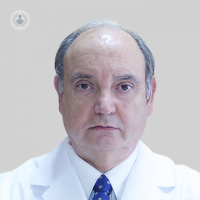Cerebral vascular malformations
Written by:What is a vascular malformation?
A cerebral vascular malformation is an abnormal communication between an artery and a vein of the brain. Normal communication between artery and vein is done through the capillaries. In the capillaries metabolic exchange is performed where oxygen and glucose pass to the brain. In vascular malformations, this tissue is replaced by another pathological one called nidus, which is a set of vessels that have no metabolic function and the arterial blood goes directly to the venous blood.

What causes vascular malformation?
Cerebral vascular malformation is a congenital disorder, that is, it appears from the moment of birth. It is not a hereditary alteration. This congenital alteration is due to a developmental disorder in the vascular tree that occurs at a certain moment of embryological development.
How do we know if we suffer a vascular malformation?
The form of clinical expression of a cerebral vascular malformation is cerebral hemorrhage. This cerebral hemorrhage, depending on its volume and the area of the brain where it sits, can manifest as a headache more or less important or an alteration in the level of consciousness that can reach even the coma. This coma can even be accompanied by a focal neurological deficit such as a hemiplegia.. The second form of presentation, by frequency, are epileptic seizures, which appear in patients who have never had an epileptic seizure.. These crises are due to a phenomenon of ischemia in the cerebral cortex where the arterio-venous malformation. Both cerebral hemorrhage and epileptic seizures are reasons for the patient to go to a hospital center. There is a third form of clinical presentation that is headache. This is usually important and persistent in patients who had never had headache or who had had a different headache than they have at that time. These patients consult with the neurologist and the neurologist may suspect that there is a phenomenon of cranial hypertension and may even detect that he has papilledema.. Whether you have it or not, prescribes the performance of an MRI that is the ideal test to diagnose an arterio-venous malformation. Once that malformation has been diagnosed, it is usually complemented with an arteriographic analysis, and with these two tests it sends the patient to the neurosurgeon..
What is the treatment?
The treatment of cerebral vascular malformations is fundamentally surgical. Currently, it is a multidisciplinary team that deals with this pathology. This team is made up of neurosurgeons, neurologists, interventional neuroradiologists and radiosurgeons. The treatment approach varies in each case depending on the size, structure and location of the vascular malformation in the brain. The simplest malformations that are type 1 and type 2 are exclusively surgical. The type 3, 4 and 5 treatment can be neuroradiological, by embolization of the nidus with material that thrombosed and complementing with radiosurgery or with conventional surgery.


